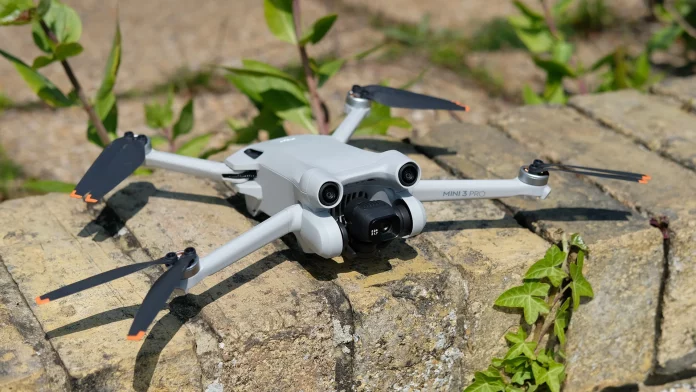When DJI debuted the Mini 3 Pro in 2022, it appeared as though the firm was abandoning truly beginner-friendly drone products. Yes, the Mini 3 Pro is compact, very portable, and falls under the regulator-friendly sub 250g bracket, but some of the capabilities available—as well as the price—are aimed more at expert users and professionals. We gonna see DJI Mini 3 Review.
Commercially, it made sense to offer the Mini 3 Pro first, but with the debut of the Mini 3, newbie drone fans now have a more cheap choice to explore.
From the exterior, DJI’s two Mini 3 versions appear nearly similar; the key difference is the lack of obstacle avoidance sensors on the Mini 3, which is one of the model’s main drawbacks.
DJI MINI 3 SPECS
Sensor: 12MP 1/1.3-inch CMOS sensor
Equivalent focal length: 24mm
Video: 4K up to 30fps, 2.7K at up to 60fps, FHD at up to 60fps
Stabilization: 3-axis mechanical gimbal
Collision avoidance: No
GPS: GPS, Glonass and Galileo
Flight Times: Up to 38 minutes
Maximum flight speed: 35.8mph
Size: 148×90×62 mm folded / 251×362×72 mm unfolded
Weight: 248g (with battery & microSD card)
DJI MINI 3: Release Date and Price :
- Released December 2022
- Available in five main kit options
- Basic RC-N1 kit costs just $559 | £519 | AU$829
The DJI Mini 3 was announced and released in December 2022 as a less expensive and more basic version of the Mini 3 Pro. While many of the primary functions are shared by both versions, consumers may choose the one that best meets their unique requirements and, of course, their budget.
The Mini 3 is available in five primary kit options: drone just for $469 | £439 | AU$699; RC-N1 controller kit for $559 | £519 | AU$829; DJI RC (smart controller) kit for $699 | £669 | AU$1019; RC-N1 Fly More Combo for $718 | £678; and DJI RC Fly More Combo for $858 | £828. The Fly More Combo Plus bundle costs AU$1188 in Australia, and adding the remote controller to that bundle costs AU$1378. The packages feature two Intelligent Flight Batteries Plus (47-minute maximum flying duration), although they increase the weight of the drone beyond 249 gramms.
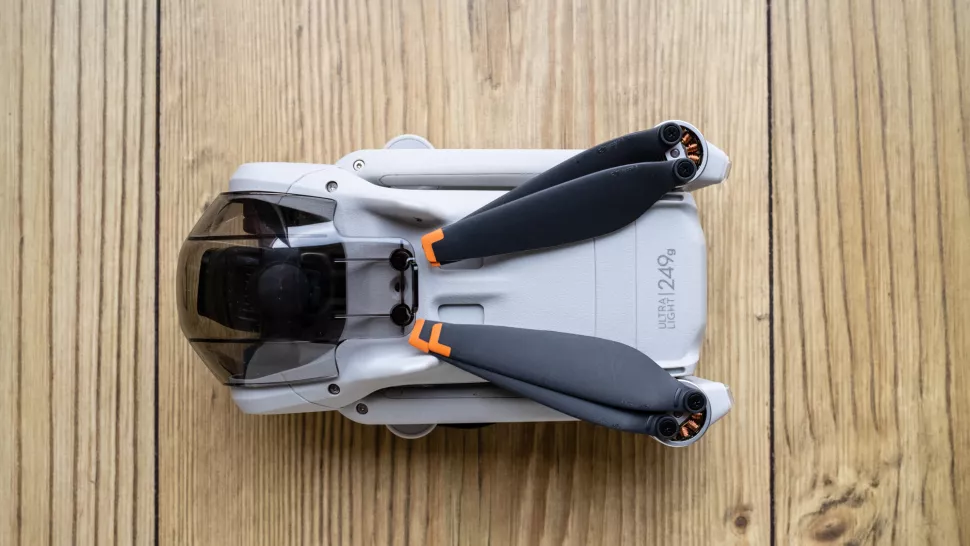
DJI MINI 3: Design and Controller :
- Lightweight 249g folding design
- Two controller options
- Increased flight time over Mini 3 Pro
Because the Mini 3 and Mini 3 Pro are essentially identical, if you’ve seen the Mini 3 Pro, you already have an excellent sense of what the Mini 3 looks like. The primary obvious distinction is that the Mini 3 lacks collision avoidance sensors. The Mini 3, like all Mini models, has a folding construction in which the propeller arms fold in for easy storage and transportation. The folded measurements are 1489062 mm and the unfolded dimensions are 25136272 mm, and the drone, with the battery and microSD card, weighs just 248g.
With the same 2453mAh Intelligent Flight Battery as the Mini 3 Pro, the Mini 3 has a significantly longer flying duration. The maximum stated flight time is 38 minutes, compared to the Pro’s 34 minutes, however when environmental considerations and the default charge level of 25% are considered when Return to Home is launched, flying time is closer to 25 minutes. These figures are from winter testing, and we anticipate that flying times will increase over the hotter summer months.
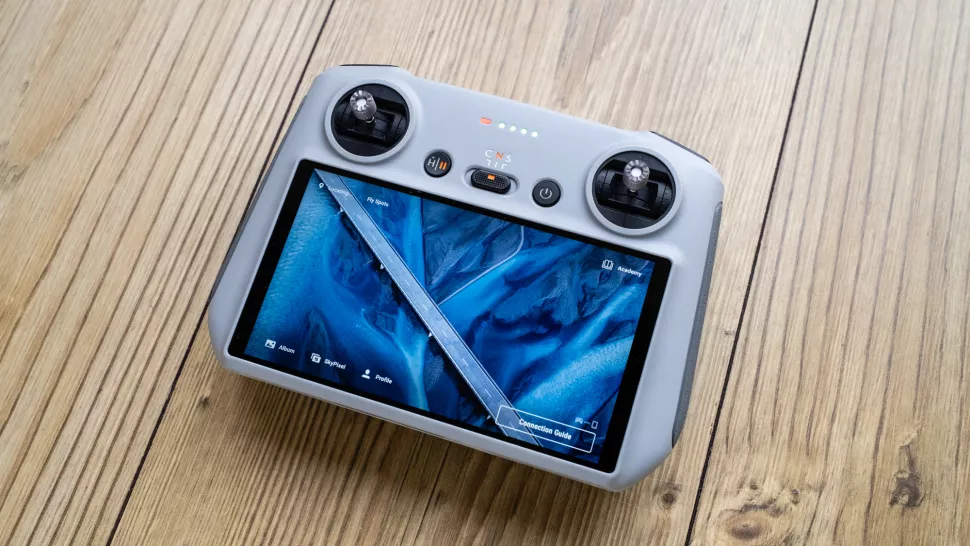
There are two controllers available, with the basic kit that comes with the DJI RC-N1 being the less costly alternative. This is the identical controller that comes with the Mavic 3 and Mavic Air 2S, as well as the Mini 2. This controller features a phone holder on the top where you may keep the phone connection cord when not in use.
The DJI RC Smart Controller, which has a 5.5-inch touchscreen and 700-NIT brightness, is the alternative controller choice. The DJI RC is considerably easier to set up and use, and the screen is crisper in sunlight than some cell phone screens.
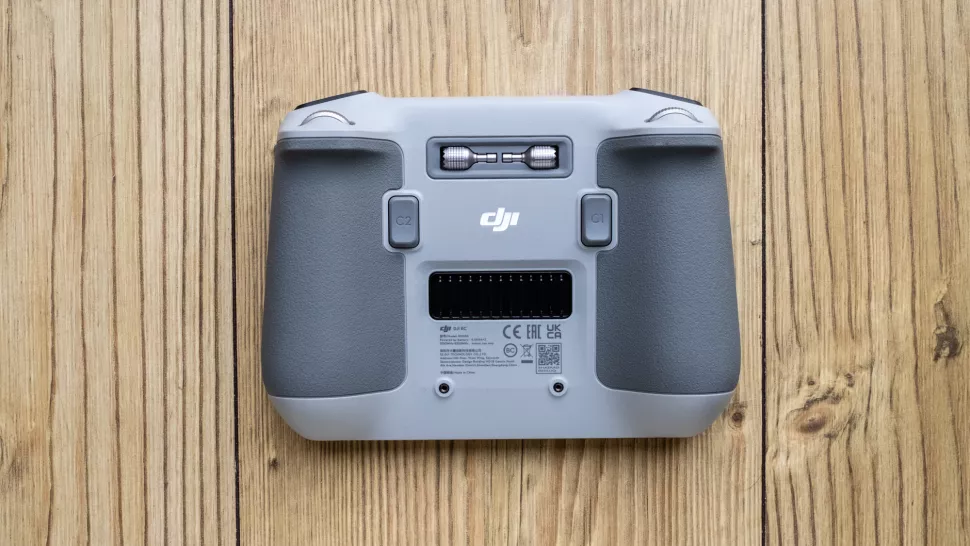
DJI MINI 3: Features and Flight
- 12MP 1/1.3-inch sensor
- Level 5 wind resistance
- Quickshots flight patterns
DJI drones are famed for their user-friendliness, and the Mini 3 is no exception. The controls are really simple to set up and provide a generally favorable flight experience with no discernible latency between input and execution. There are three flying modes to choose from: Cine, Normal, and Sport. Cine is the slowest mode, with lower control sensitivity for smoother video recording; Normal is the most widely used option; and Sport is the quickest, with a peak speed of 35.8mph.
Wind resistance is as claimed up to Level 5 (up to 24 mph), and the Mini 3 can fly in these conditions with the flight mode set to Sport. It’s a little, lightweight drone that’s not near as powerful as the Mavic 3. It may wander in winds of up to 24 mph, and the controls grow less responsive as the drone battles wind gusts.
Most people will be most interested in the camera, which can be rotated 90 degrees between landscape and portrait orientation. In all angles, all picture and video capability is available. The camera has a 12MP 1/1.3-inch sensor, a 24mm equivalent focal length, and a fixed f/1.7 aperture with a focus range of 1m to infinity. Single Shot, Timed, Auto Exposure Bracketing, Panoramic Sphere, 180°, Wide Angle, and HDR are among the shooting modes available.
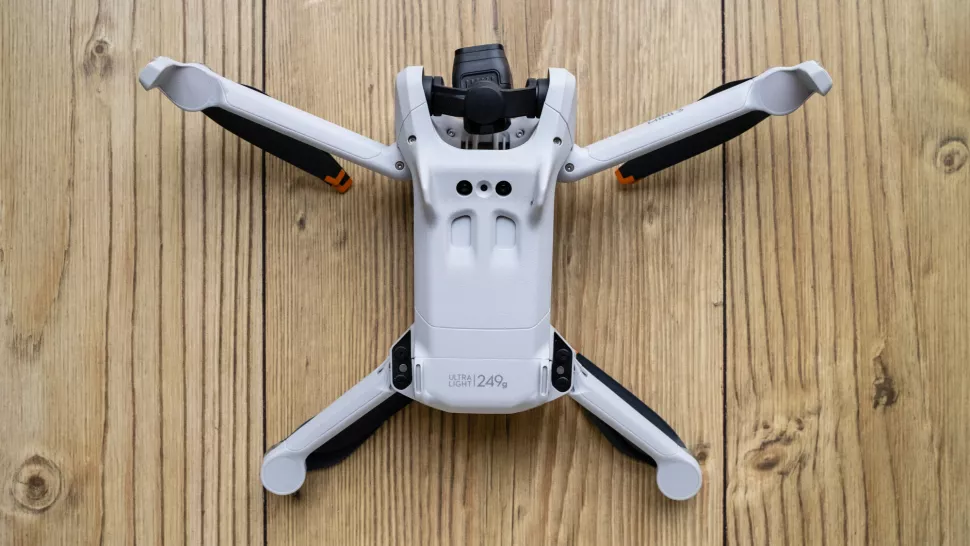
The camera is the same as on the Mini 3 Pro, although 48MP raw and JPEG photography is not accessible on the Mini 3. Nevertheless, utilizing Adobe’s Super Resolution in Lightroom and Adobe Camera Raw, you can simply boost the size of the 12MP Raw files. When we tested the Mini 3 Pro, the in-camera interpolation of Raw files was nearly equivalent to Adobe’s Super Resolution, indicating that despite the lack of the capability in the drone, you can still obtain similar results in post-production, with the only expense being time.
Quickshots are a time-saving tool that novices will appreciate. These are automated flying patterns that make it simple to obtain fascinating video footage. There are five alternatives available, and each may be shot horizontally or vertically. One thing to keep in mind is that the Mini 3 lacks obstacle avoidance sensors, so you must ensure that there are no things around that the drone might collide with when conducting Quickshots.
Collision avoidance is a valuable function that has been left out, likely to save money and differentiate the two Mini 3 variants. Downward vision sensors aid in hovering precision and function in conjunction with GPS, Glonass, and Galileo global satellite location. When the controls are released, the drone remains in position while hovering. Then there are many Return to Home capabilities that automatically fly the drone back to the take-off location in a variety of situations, such as when the battery is low or the connection between the controller and the drone is weak or dropped. Certain RTH tasks need the pilot to start them, while others, such as low battery RTH, are initiated by the drone.
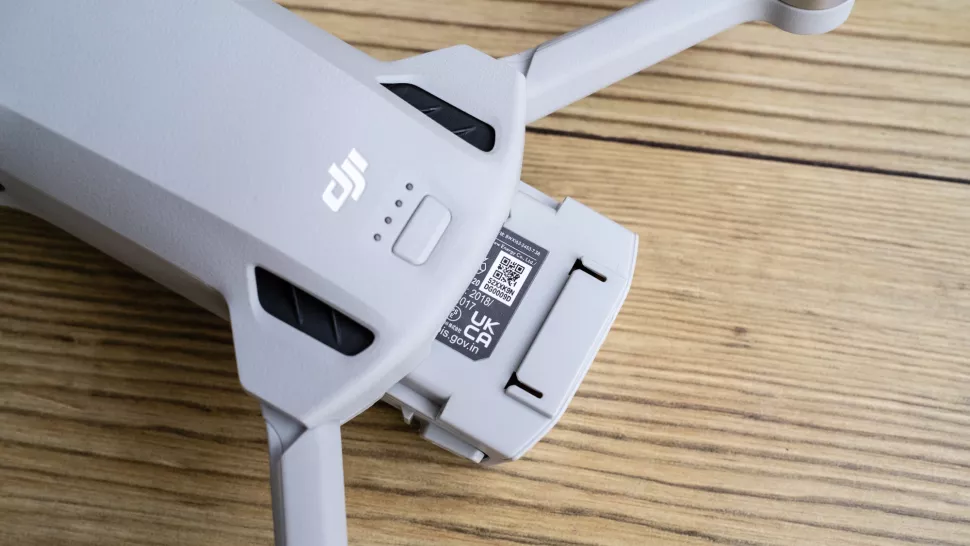
DJI MIN 3: Image Quality
- Raw and JPEG photo capture
- Video up to 4K at 30fps
- Excellent image quality overall
Overall image quality is superb given the camera’s compact size and sensor, which is also bigger than the sensor used in the Mini 2. Pictures are sharpest in the middle, with a drop-off in clarity as you travel towards the photo frame’s edges, but video footage is not the same.
The ISO handling is likewise superb, with natural color present and little to no color or luminance noise noticeable over the ISO 100-3200 range. This is due to DJI’s dual native ISO technology, first seen in the Mini 3 Pro, which allows these small drones to generate superior image quality at higher ISO settings than certain larger-sensored drones. As a consequence, when paired with the fast f/1.7 aperture, 2.4 m size pixels, and DJI’s chip-level HDR technology, photographs and movies may be recorded in low light circumstances with stunning results.
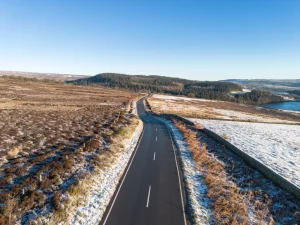



JPEG and raw photos may be shot, with the former delivering good quality right out of the camera and the latter giving more expert users additional editing options. The video capabilities are significantly less than those of the Mini 3 Pro, but you can capture in 4K at up to 30fps, 2.7K at up to 60fps, and FHD at up to 60fps. HDR footage is captured when filming at 24/25/30fps.
The only video profile offered is Normal, with no Log profiles, and the maximum video bitrate is 100Mbps – not appropriate for a professional workflow. Enthusiasts, on the other hand, may prefer the Normal profile since it is easier to work with than Log film and does not require color grading.
If you want to film video, even at a basic level, ND filters are advised to get the right shutter speed for natural-looking movement. DJI sells an ND filter set separately, and the 180-degree rule for video implies that the shutter speed utilized should be nearly double the frame rate of the video being taken. Thus, if you photograph at 30 frames per second, the appropriate shutter speed is 1/60 sec- easy.
Should I buy the DJI Mini 3?
Buy it if…
Don’t buy it if…
DJI Mini 3: testing scorecard
| Attributes | Notes | Rating |
|---|---|---|
| Price | Decent value | 4/5 |
| Design | Small and compact | 5/5 |
| Features and performance | No obstacle avoidance | 4/5 |
| Image and video quality | Same as more expensive Mini Pro 3 | 5/5 |


